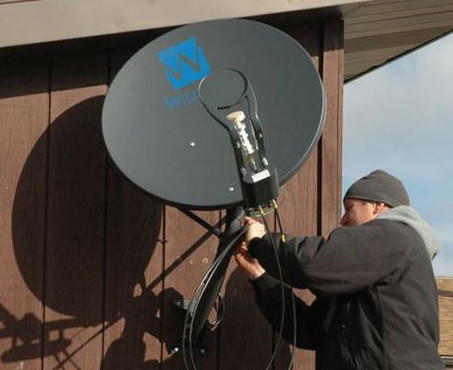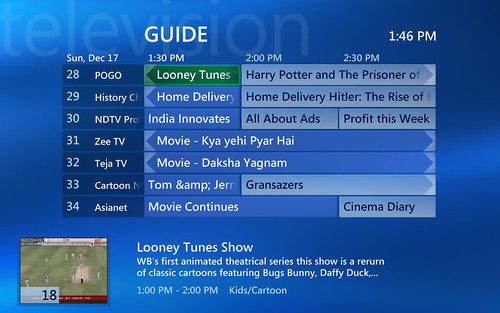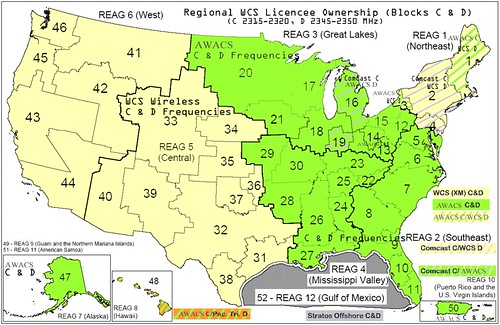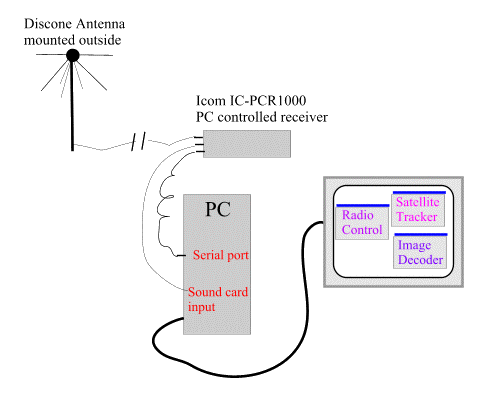It’s incredible to reflect — and appropriate in these early days of a new year — on how rapidly broadband access has grown in the last four years. Back in 2004, some of us were still contending with dial up at home, while on the road, an 802.11b connection was a rare luxury.
Now, of course, WiFi is ubiquitous, but for true road warriors, seeking out a Starbucks is no longer an acceptable way to maintain productivity. Aircards or satellite broadband are the way to go.
And for those in the rural and ex-urban hinterlands, satellite broadband is increasingly edging out DSL and Cable as the way to get connected. As we’ve blogged before, WildBlue has been so successful in signing up ex-urbanites that they’ve had to turn away business.

But more capacity is on the way. Eutelsat and ViaSat are working together in developing the Ka-band for Internet access services:
ViaSat and Eutelsat are cooperating around ViaSat’s Ka-band SurfBeam networking system and a common wholesale business model to offer service through ISPs, telecommunication companies, and direct-to-home television providers, the US company said.
Eutelsat announced separately that it has selected EADS Astrium to deliver its first satellite operating exclusively in Ka-band frequencies.
ViaSat, too, is getting its own satellite — a first for them — to be built by Loral and operated by Telesat:
The new spacecraft is scheduled to launch in 2011 and is expected to provide more than 15 years of service life. It employs SS/L’s space-proven 1300 platform and high-capacity Ka-band spot beam technology to ultimately service more broadband users at faster data rates than any previous satellite.
The orbital location, 115 degrees West, is one Telesat has had for a while. (It was not one of the new licenses issued last June.)
Meanwhile, Telesat’s Canadian competitor broke ground on its satellite control center last month:
The Ciel Satellite Group announced today that it has selected SED Systems, a division of Calian Ltd, to expand SED’s satellite control center facilities in Saskatoon in preparation for the initiation of tracking, telemetry and control (TT&C) operations for Ciel-2, a satellite that is planned for operation by the first quarter of 2009….
SED Systems has been in operation since 1965. Headquartered in Saskatoon, Saskatchewan, the company is ideally located, in terms of look-angle to Ciel-2’s 129 degree West orbital position. In March 2008, ground will be broken to install the monitoring antenna, while the entire facility renovation and upgrade is expected to be complete by the end of summer 2008. A team of dedicated satellite controllers will be trained and in position, ready to operate Ciel-2 well before its planned fourth quarter 2008 launch and in-orbit testing.
It should be noted that ViaSat’s further adoption of its DOCSIS-based Surfbeam platform, which is used by WildBlue in the U.S., could lead to ViaSat helping WildBlue with additional capacity in the future.
For a local perspective on Viasat’s new venture, check out this article from the San Diego Union-Tribune.
Without a doubt, the satellite broadband business continues to boom.





 No, politicos, we’re not talking about a "free trade agreement." This is rocket scientist shorthand for
No, politicos, we’re not talking about a "free trade agreement." This is rocket scientist shorthand for 







